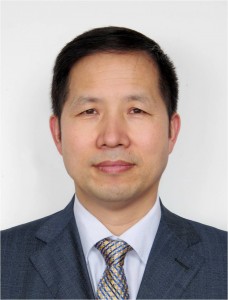 Prof. Yu-Zhong Wang received his PhD degree from the Sichuan University in 1994. He joined Sichuan University in 1994, and was promoted to professor in 1995. He was a visiting professor of Max-Planck Institute for Polymer Research with the support of DAAD in 1999, and in the University of Nottingham (UK) in 2002 with the support of the Royal Society, respectively. He was awarded the National Science Fund for Distinguished Young Scholars, Cheung Kong Scholar of Ministry of Education of China, Younger Prize of Guanghua Engineering Science and Technology of Chinese Engineering Academy, Excellent Postgraduate’s Advisor of Sichuan Province, Outstanding Younger Innovation Prize of Sichuan Province and over 10 governmental Science & Technology Awards such as National Technology Invention Prize, National Science and Technology Progress Prize, etc. He has published more that 300 peer reviewed research papers and 73 patents. His current research interests are the Bio-Based and Biodegradable Polymeric Materials, Halogen-Free Flame-Retardant Polymeric Materials, etc.
Prof. Yu-Zhong Wang received his PhD degree from the Sichuan University in 1994. He joined Sichuan University in 1994, and was promoted to professor in 1995. He was a visiting professor of Max-Planck Institute for Polymer Research with the support of DAAD in 1999, and in the University of Nottingham (UK) in 2002 with the support of the Royal Society, respectively. He was awarded the National Science Fund for Distinguished Young Scholars, Cheung Kong Scholar of Ministry of Education of China, Younger Prize of Guanghua Engineering Science and Technology of Chinese Engineering Academy, Excellent Postgraduate’s Advisor of Sichuan Province, Outstanding Younger Innovation Prize of Sichuan Province and over 10 governmental Science & Technology Awards such as National Technology Invention Prize, National Science and Technology Progress Prize, etc. He has published more that 300 peer reviewed research papers and 73 patents. His current research interests are the Bio-Based and Biodegradable Polymeric Materials, Halogen-Free Flame-Retardant Polymeric Materials, etc.
web site: http://chem.scu.edu.cn/polymer/yzwang/index_e.htm
What was your inspiration in becoming a chemist?
Chemistry is “the central science”. When I was young, I though that Chemistry was very magical, and could produce countless new substances, so I began to like Chemistry. In the national university entrance exam, my Chemistry test scores were almost full marks, only losing 1 point. From then on, I began my chemical career, especially the research of polymer materials.
What was the motivation to write your Polymer Chemistry article? (DOI:10.1039/C2PY20331F)
One of the most interesting phenomena in the miscible crystalline/crystalline systems is the formation of interpenetrating spherulites (IPS), where a spherulite of one component continues growing inside that of the other component when they are crystallized from a homogeneous melt. Interestingly, when we researched a novel polymer blend of branched PLA-PPDO copolymer and linear PPDO homopolymer, interpenetrating spherulites morphology was observed. Since the PLA and PPDO blocks are immiscible in the blends, understanding the special IPS crystallization mechanism, which was generally considered occurring only in those miscible polymer blends, will be of particular important and valuable.
Why did you choose Polymer Chemistry to publish your work?
Polymer Chemistry is an excellent new journal in polymer science. Moreover, the review and publishing process of this journal is very fair and fast.
In which upcoming conferences may our readers meet you?
2012 BioEnvironmental Polymer Society (BEPS) Annual Meeting, September 18th-21st in Denton, Texas, USA.
I am organizing an international conference entitled “The 2nd International Symposium on Flame-Retardant Materials & Technologies” (ISFRMT 2012), which will be held in Chengdu, China on September 17-20, 2012. Website: http://www.isfrmt.org/
How do you spend your spare times?
I like to watch TV programs and access internet for news.
Which profession would you choose if you were not a scientist?
I would be a navigator.










